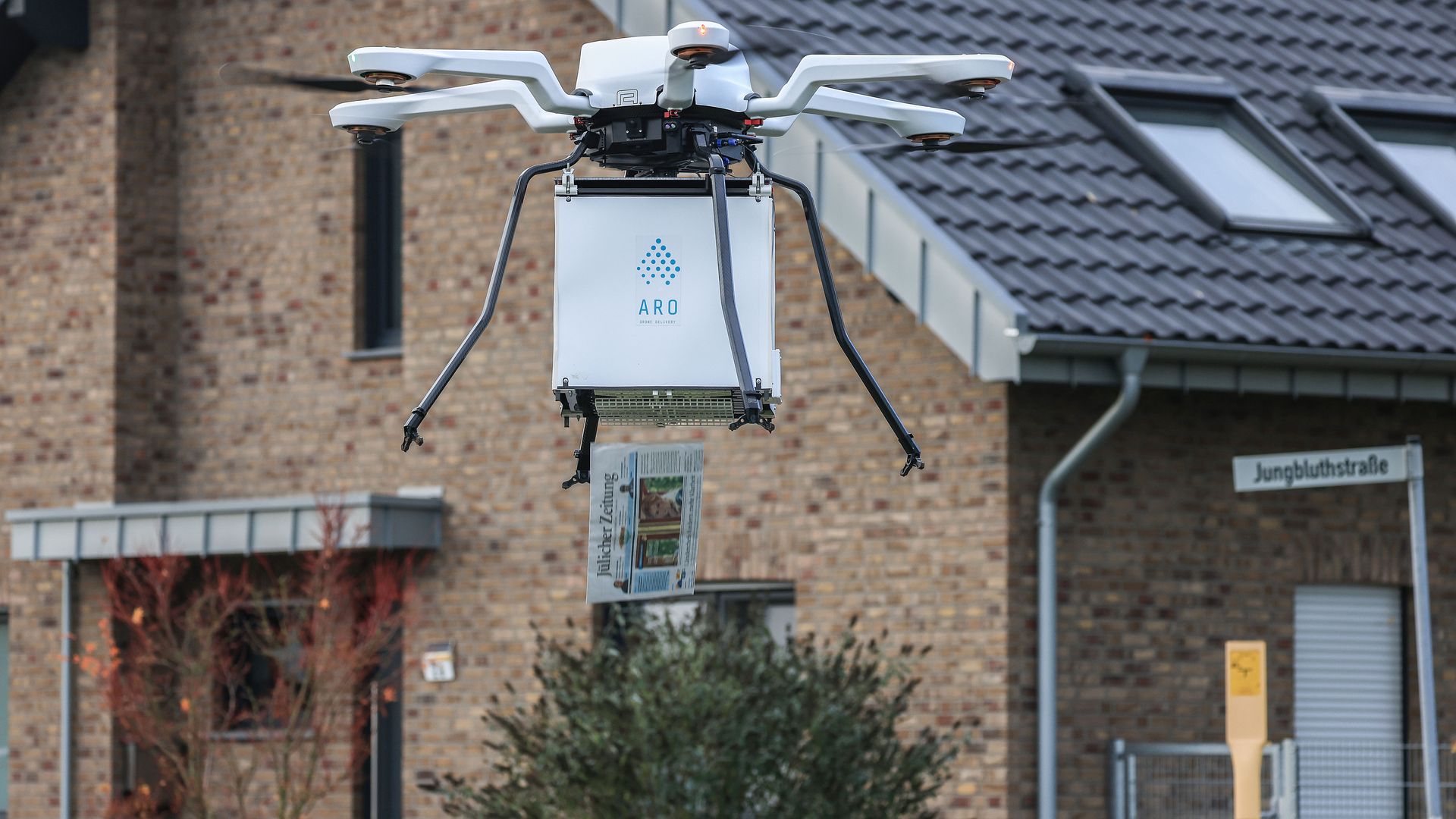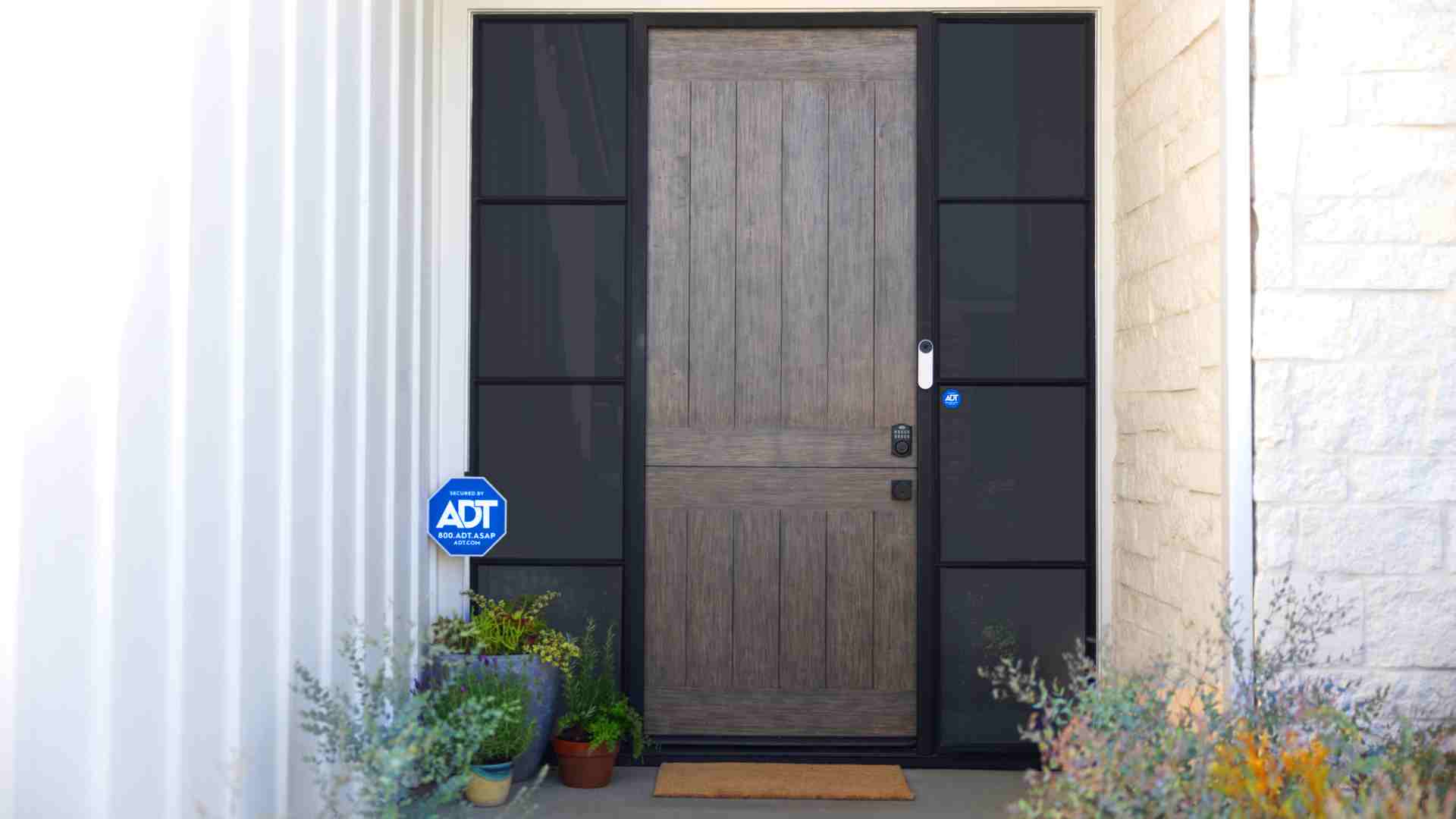| | | | | | | Presented By ADT | | | | Axios What's Next | | By Joann Muller, Jennifer A. Kingson and Alex Fitzpatrick · Dec 12, 2022 | | The next big thing in electric cars? Better batteries, as Joann reports today. Today's newsletter is 996 words ... 4 minutes. | | | | | | 1 big thing: Building a better EV battery |  Recreated from BloombergNEF; Chart: Axios Visuals New battery technologies in development could open the door to widespread adoption of electric vehicles by cramming more energy into a cheaper, smaller package, Joann Muller writes. Why it matters: Consumers won't embrace electric vehicles until they cost about the same as (or less than) gasoline cars and provide a comparable driving range — around 300 miles between charges. - But at an average price of about $62,000, EVs are still too expensive for many — and the high cost of lithium-ion batteries is mostly to blame.
- After falling for a decade, battery prices rose in 2022 due to higher raw materials costs.
What's happening: Scientists are trying to develop inexpensive, lightweight next-generation batteries that do it all — hold lots of energy, release power quickly, operate safely and last a long time. - Battery development, however, is a game of trade-offs. High performance on one criterion generally means lower performance on another.
- A battery with higher "energy density" (meaning it's designed to store more energy) could overheat and catch fire, for example.
- The challenge is finding the right mix of materials and chemical processes to optimize performance across the board.
What to watch: Most of the industry is betting on solid-state batteries as a game-changing solution. - Solid-state batteries replace the gooey liquid electrolyte that carries lithium ions between the cathode and the anode with a thin ceramic or sulfide-based material.
- These next-gen batteries are expected to store twice as much energy as today's lithium-ion batteries — potentially doubling the range of an electric car to 600 miles or more — and possibly recharge in one-third the time.
- They'd also be lighter, cheaper and less likely to burst into flames, scientists say.
- Many companies are working on the technology, from automakers such as Toyota and Nissan to battery giants Panasonic and Samsung and startups including QuantumScape and Solid Power.
Yes, but: Despite encouraging lab results, the industry has yet to prove it can scale the technology for mass production. Meanwhile, there are other ways to squeeze better performance and lower costs from today's EV batteries, such as adding silicon to graphite anodes or shifting to pure "lithium-metal" anodes, both of which are in development. - For now, some carmakers, including Tesla and Ford, are turning to cobalt- and nickel-free lithium-iron phosphate (LFP) batteries, especially for their lower-priced EVs.
- While LFP batteries are cheaper and safer, they provide a shorter driving range than batteries made with cobalt and nickel.
As charging infrastructure improves, however, that might become less of an issue, some experts say. - "There's a prevailing thought that 300 miles is table stakes for the next generation of electric vehicles," says Mark Verbrugge, director of General Motors' Chemical and Materials Systems Laboratory.
- "But what about a vehicle with only 200 miles that's two-thirds the cost and could be fast-charged in 15 minutes?"
The bottom line: Solid-state batteries are still the holy grail for EVs. Share this story. |     | | | | | | 2. Axios Local Power Player: Melvin Carter |  | | | Photo: Jerry Holt/Star Tribune via Getty Images | | | | Melvin Carter, who knows most change starts at the local level, is one of Axios Local's 2022 Power Players — influential people who made a big difference in their community this year. The big picture: Carter, the mayor of St. Paul, Minnesota, is the driving force behind an innovative universal basic income (UBI) project that's become a model for other cities nationwide. What's happening: St. Paul's UBI pilot project first launched in 2020, and expanded in 2022. - Hundreds of families are sent unconditional cash every month for 18 months to address poverty and income inequality.
- St. Paul's larger neighbor Minneapolis followed suit this year, as have other cities.
Axios Local reporters made Power Player selections based on their own expertise, a reader poll and interviews with influential people. Read all the profiles here. |     | | | | | | 3. How ChatGPT could disrupt the search business |  | | | Illustration: Sarah Grillo/Axios | | | | ChatGPT, the latest high-tech AI chatbot, could change the way we search the internet, Axios' Emily Peck writes. Why it matters: It's a potential threat to Google, which critics say is already getting worse at its primary function. How it works: Simply type a prompt into its interface, and ChatGPT writes you back in paragraphs. - When asked how to make chocolate chip cookies, ChatGPT offered up a short, clear recipe.
- Compare that to Google, which returns links to long, overwritten blog posts that require endless scrolling before you get a recipe.
The big picture: Those recipe websites are part of a whole ecosystem of businesses built around optimizing for Google searches. - This is part of why Google has spent so much money on chat AI. The tech giant pulled in $149 billion from its search business last year, more than half of total revenue.
Yes, but: ChatGPT has no idea whether anything it says is true, whereas Google strives to rank credible pages toward the top of its results. What's next: Expect to see more AI bots from bigger players. - "It's game time for Google," tech writer Alex Kantrowitz told Emily on the podcast What Next: TBD. "I don't think it can sit on the sidelines for too long."
Read the rest. |     | | | | | | A message from ADT | | Leave your worries at the door | | |  | | | | It's time to install a home security system this new year. Here's the deal: Through Jan. 31, ADT will install your Google Nest Doorbell for free* — and give you a $100 Visa Rewards Card. Get a free quote. *Requires a 36-month contract with ADT Video or Complete. For full terms and pricing, see website. | | | | | | 4. 📸 21st-century paperboy |  | | | Photo: Oliver Berg/Picture Alliance via Getty Images | | | | A newspaper drops from a drone in Jülich, Germany, just west of Cologne, as part of a pilot program run by local news publishers. - The papers are loaded into a cargo box that's carried by the drone, with individual issues delivered right to readers' homes.
Why it matters: Because drones are electric, they could be more eco-friendly than newspaper trucks. The big picture: Companies like Amazon are expanding their drone delivery efforts in the U.S., albeit slowly. |     | | | | | | 5. The last 747 rolls out |  | | | Photo courtesy of Boeing | | | | The last-ever Boeing 747 left the company's Washington factory last week, ending production of the iconic jet after a half-century soaring the skies, Axios' Sareen Habeshian reports. Why it matters: The world's first twin-aisle airliner transformed global travel after debuting in 1970. All told, Boeing built 1,574 747s. Details: The last 747 — a cargo variant — will be delivered to Atlas Air early next year, Boeing said in a statement. Yes, but: Plenty of 747s are still flying — and will keep doing so for years. Share this story. |     | | | | | | A message from ADT | | Protect your home with a reliable security system | | |  | | | | In the new year, protect your home with an ADT security system. The deets: ADT will install a Google Nest Doorbell and Outdoor Nest Cam for free.* That's $538 saved. The deal is good through Dec. 31. Get a free quote. *Requires a 36-month contract with ADT Video or Complete. For full terms and pricing, see website. | | | | Big thanks to What's Next copy editor Amy Stern. Was this email forwarded to you? Get your daily dose of What's Next by signing up here for our free newsletter. |  | | Are you a fan of this email format? Your essential communications — to staff, clients and other stakeholders — can have the same style. Axios HQ, a powerful platform, will help you do it. | | | | | | Axios thanks our partners for supporting our newsletters. If you're interested in advertising, learn more here.
Sponsorship has no influence on editorial content. Axios, 3100 Clarendon Blvd, Arlington VA 22201 | | | You received this email because you signed up for newsletters from Axios.
Change your preferences or unsubscribe here. | | | Was this email forwarded to you?
Sign up now to get Axios in your inbox. | | | | Follow Axios on social media:    | | | | | |










No comments:
Post a Comment